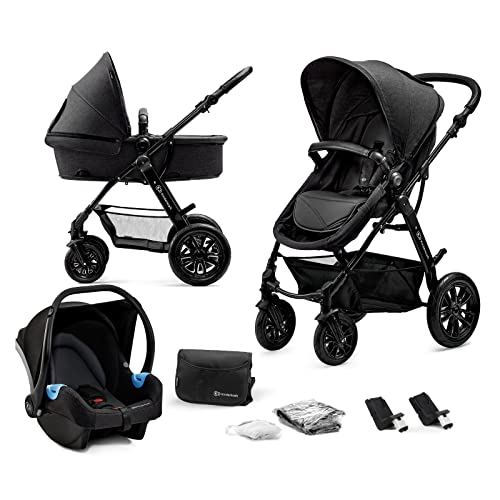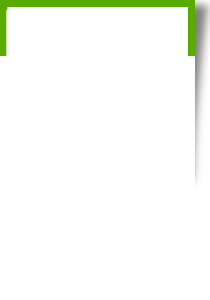15 Things You Don't Know About Pushchair Single
페이지 정보
작성자 Myron 작성일24-07-10 18:45 조회24회 댓글0건본문
What is a Pushchair Single?
A single pushchair is designed to carry one child (although some are able to be used as early as birth with the use of a car seat or a carrycot). Some are lightweight and can transform into a double.
 It is modern with a nippy design and features that make it a popular with families, such as adjustable handlebars that can be adjusted in height and a large shopping basket. It also boasts machine-washable fabrics and a footmuff that is an essential item for the colder months.
It is modern with a nippy design and features that make it a popular with families, such as adjustable handlebars that can be adjusted in height and a large shopping basket. It also boasts machine-washable fabrics and a footmuff that is an essential item for the colder months.
Convertible
If you're searching for a single stroller that can grow with your child look into a convertible model. This type of stroller has a hammock seat that converts into a carrycot, making it an ideal choice for babies. It's easy to fold away from the handlebar, and light to drive.
The Larktale Crossover is a wagon/stroller that can easily be converted into a double-seater without the use of any tools. It's a great choice for parents as it comes with many features, such as a large undercarriage in both modes as well as an organizer that hangs from the push bar. There are some disadvantages, such as the confusion caused by the zipper that connects to the seat's back in wagon-mode and the size of cup holders.
Brakes
A good pushchair single will come with a couple of braking systems. One of them is the hand brake that is usually an incredibly small lever located on the rear of the chassis which you flick down to stop, then push it back up to get going again. This is particularly useful in urban areas where you may have to stop quickly, or on pavements at malls where pedestrians could be present. The front wheel brake system can be found on high-end pushchairs like the phil&teds Dash or Bugaboo Cameleon 3. It is activated in the same way as the brakes on bicycles. This is particularly helpful when you're running or walking through rough terrain as it stops the pushchair right away and ensure that your child is safe.
The left coupling 171 used for the rear legs 57 and 19 comprises a rod to mount the rear leg 173 to which the rear leg 57 is fixedly coupled, a gear mounted on the side of 163 within the hub 3 of housing 33; a bushing 177 that is connected to gear 175 that extends out of a slot at the end of the mounting bar 173 and a wire that is arranged to wrap around J-shaped spool 181 as well as the post 31 of front leg 19. The left coupling system 171 that is used for the rear leg 57 and the front leg 19 includes a rear leg mounting bar 173 to which the rear 57 is fixedly connected; a gear 175 positioned on the side surface 163 of the housing 33, which is positioned within hub 3; spool component 181 and the post 31 of the front leg 19 wrapped around the J-shaped spool part 181 in the slot 179 at the end of the mounting bar 173 and a coiled cable 183.
The brake system 215 consists of the first end, 227. It is designed to engage the brake cams in the second position. It also has another end, 229. The second end of the lever for braking has a variety of teeth 231. The teeth are configured to engage the teeth 232 of the gear 233 driven by a first rear wheel 59 on stroller 1. When the brake lever pressed the braking cylinder stops the rotation of the first rearwheel 59 of stroller 1. The braking system can be operated manually.
Seat unit/carrycot
A pushchair single is a kind of baby travel unit for older babies (6 months and over) who are beginning to sit up and take in the world. They often have the option to convert into a pram. Prams are more sophisticated and designed for babies to toddlers. They have extra padding to ensure your child is comfortable.
A variety of pushchairs can be paired together with car seats to create an entire travel system, perfect for transferring infants asleep from the car and into the pushchair without disturbing them. Some pushchairs have a carrycot, which is perfect for newborns. Some have a seat unit that can be used when your child is ready to get out of the carrycot.
Most 'from-birth' pushchairs allow you to select the "facing direction" of the seat unit or carrycot. You can either face the parent in order to connect and reassure your baby, or face the world so that they can explore the world. Some pushchairs even have the option to attach an additional carrycot as an infant carrier or ride-on board to accommodate growing families.
A high quality pushchair should be in a position to easily move across a variety of surfaces, including pavements, grass and rough surfaces. Having a sturdy chassis that's designed to last is crucial, as is the choice of tyres. Some tyres are pneumatic, that require air to be pumped in at intervals, while other tyres have an alternative material like EVA or PU which will provide a more comfortable and consistent ride.
Your pushchair will be one of the most used baby items you own, so it's worth investing in a top-quality model that's easy to clean and maintain. A quick wipe-down with a baby wipe should eliminate any spills or crumbs and more stubborn marks can be eliminated by directing the hot air from your hair dryer at the area affected for about 1 minute.
A single pushchair is designed to carry one child (although some are able to be used as early as birth with the use of a car seat or a carrycot). Some are lightweight and can transform into a double.
 It is modern with a nippy design and features that make it a popular with families, such as adjustable handlebars that can be adjusted in height and a large shopping basket. It also boasts machine-washable fabrics and a footmuff that is an essential item for the colder months.
It is modern with a nippy design and features that make it a popular with families, such as adjustable handlebars that can be adjusted in height and a large shopping basket. It also boasts machine-washable fabrics and a footmuff that is an essential item for the colder months.Convertible
If you're searching for a single stroller that can grow with your child look into a convertible model. This type of stroller has a hammock seat that converts into a carrycot, making it an ideal choice for babies. It's easy to fold away from the handlebar, and light to drive.
The Larktale Crossover is a wagon/stroller that can easily be converted into a double-seater without the use of any tools. It's a great choice for parents as it comes with many features, such as a large undercarriage in both modes as well as an organizer that hangs from the push bar. There are some disadvantages, such as the confusion caused by the zipper that connects to the seat's back in wagon-mode and the size of cup holders.
Brakes
A good pushchair single will come with a couple of braking systems. One of them is the hand brake that is usually an incredibly small lever located on the rear of the chassis which you flick down to stop, then push it back up to get going again. This is particularly useful in urban areas where you may have to stop quickly, or on pavements at malls where pedestrians could be present. The front wheel brake system can be found on high-end pushchairs like the phil&teds Dash or Bugaboo Cameleon 3. It is activated in the same way as the brakes on bicycles. This is particularly helpful when you're running or walking through rough terrain as it stops the pushchair right away and ensure that your child is safe.
The left coupling 171 used for the rear legs 57 and 19 comprises a rod to mount the rear leg 173 to which the rear leg 57 is fixedly coupled, a gear mounted on the side of 163 within the hub 3 of housing 33; a bushing 177 that is connected to gear 175 that extends out of a slot at the end of the mounting bar 173 and a wire that is arranged to wrap around J-shaped spool 181 as well as the post 31 of front leg 19. The left coupling system 171 that is used for the rear leg 57 and the front leg 19 includes a rear leg mounting bar 173 to which the rear 57 is fixedly connected; a gear 175 positioned on the side surface 163 of the housing 33, which is positioned within hub 3; spool component 181 and the post 31 of the front leg 19 wrapped around the J-shaped spool part 181 in the slot 179 at the end of the mounting bar 173 and a coiled cable 183.
The brake system 215 consists of the first end, 227. It is designed to engage the brake cams in the second position. It also has another end, 229. The second end of the lever for braking has a variety of teeth 231. The teeth are configured to engage the teeth 232 of the gear 233 driven by a first rear wheel 59 on stroller 1. When the brake lever pressed the braking cylinder stops the rotation of the first rearwheel 59 of stroller 1. The braking system can be operated manually.
Seat unit/carrycot
A pushchair single is a kind of baby travel unit for older babies (6 months and over) who are beginning to sit up and take in the world. They often have the option to convert into a pram. Prams are more sophisticated and designed for babies to toddlers. They have extra padding to ensure your child is comfortable.
A variety of pushchairs can be paired together with car seats to create an entire travel system, perfect for transferring infants asleep from the car and into the pushchair without disturbing them. Some pushchairs have a carrycot, which is perfect for newborns. Some have a seat unit that can be used when your child is ready to get out of the carrycot.
Most 'from-birth' pushchairs allow you to select the "facing direction" of the seat unit or carrycot. You can either face the parent in order to connect and reassure your baby, or face the world so that they can explore the world. Some pushchairs even have the option to attach an additional carrycot as an infant carrier or ride-on board to accommodate growing families.
A high quality pushchair should be in a position to easily move across a variety of surfaces, including pavements, grass and rough surfaces. Having a sturdy chassis that's designed to last is crucial, as is the choice of tyres. Some tyres are pneumatic, that require air to be pumped in at intervals, while other tyres have an alternative material like EVA or PU which will provide a more comfortable and consistent ride.
Your pushchair will be one of the most used baby items you own, so it's worth investing in a top-quality model that's easy to clean and maintain. A quick wipe-down with a baby wipe should eliminate any spills or crumbs and more stubborn marks can be eliminated by directing the hot air from your hair dryer at the area affected for about 1 minute.
댓글목록
등록된 댓글이 없습니다.





